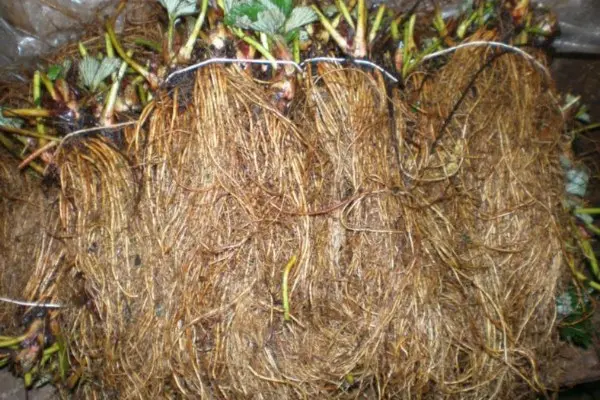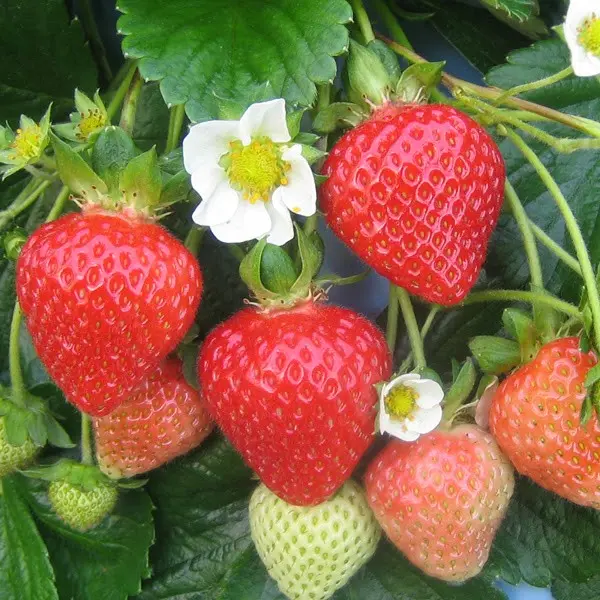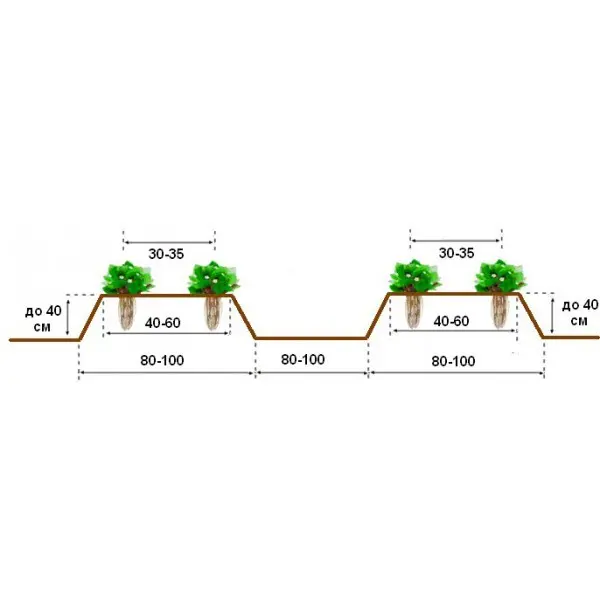Contents
Modern gardening technologies greatly facilitate the process of laying a plantation, growing strawberries and allow you to get a big harvest all year round. Everyone knows that the fruiting of the bushes directly depends on the quality of the planting material. For this, the so-called Frigo strawberry seedlings are used, which are stored for a long time in a frozen state with an open root system.
What is the effectiveness of the Frigo method?
Frigo’s strawberry seedlings are dug up in late autumn with the help of special equipment. After that, it is cleaned, excess vegetation is removed, sorted into classes and packed for storage. Processing of seedlings is carried out in an equipped room with a constant air temperature of 12-14C, for 48 hours. Then the processed beams are placed in a storage chamber, where high humidity of 85-90% and low temperature of 0-1C are observed. In this frozen form, strawberries can be stored from several weeks to 9-10 months. Plants begin to bear fruit within 7-9 weeks after planting.

The peculiarity of this method is that the bushes do not overwinter on the ridges, where they can be exposed to various adverse factors. Thus, you can get a high yield of quality berries in any period. If you organize the planting of seedlings correctly at different times, you can get a continuous fruiting cycle, which is very important for large farms and entrepreneurs.
In addition, this technology makes it possible to conveniently transport planting material to any distance without damage to plants. A well-developed root system at the landing site ensures rapid adaptation and survival. At the same time, all the nutrients accumulated by the plant are used for the harvest, and not for the development of the bush itself.

Cons of seedlings “frigo”
The most significant disadvantage of Frigo strawberry seedlings is the need for expensive special equipment for its processing and further storage, and, as a result, the high market value of this product. In order for the roots to give a good harvest, to be stored for a long time, the temperature in the storage must be constant. The slightest fluctuation even in 0,2-0,6 C can lead to freezing of the roots or premature germination of flower buds. In addition, you also need a specialized device to maintain a consistently high humidity, at least 85-90%.
On the territory of Ukraine, Our Country, Belarus, it is rather difficult and energy-intensive to grow such seedlings. This is explained by unfavorable weather conditions and a relatively short growing season.

Varieties and classes
According to the established European standards, Frigo strawberry seedlings are divided into 4 main classes according to the diameter of the neck of a shortened shoot – part of the seedling from the rosette of leaves to the roots.
Class B plants – neck diameter is 8-12 mm. They form only one peduncle and are often used to obtain a crop in subsequent years after planting. Why the peduncle is regularly removed.
Class A plants – neck diameter 12-15 mm. Fruiting begins in the current planting year with proper transplantation and care. They produce a minimum of 2-3 peduncles and a guaranteed minimum productivity of 150-250 g.
Class A + plants – neck diameter 15-18 mm. They can be stored for a longer period than the previous classes, therefore they are especially valuable for laying large-scale plantations with a late harvest. Although their cost is much higher, they bear fruit well in the first year after planting – 9-11 t / ha, paying off all expenses.
Plants of class A + extra – neck diameter 20-24 mm. As a rule, they have lateral horns and form 4-6 fruit-bearing plants, which increases their yield up to 450-500 g of berries from one bush, depending on the variety. Survival is fast and 100%. However, the cost of seedlings of this class is the highest.

It should be noted that, regardless of the type of seedlings, Frigo is several times superior to ordinary strawberries in all its characteristics and largely exceeds its yield.
Planting and care
If a one-time use of the plantation is planned, then the plants are planted compactly with a distance between rows of at least 18-25 cm in order to avoid excessive thickening and crushing of the berries. With a two-year cycle, a row or two-line planting is used with a distance between rows of 85-95 cm, between lines – 45-55 cm, between bushes 25-35 cm.
Thawed seedlings should be immediately planted in well-moistened, enriched soil, without leaving it with open roots for more than 10-15 minutes. To maintain the distance between the bushes, special markers are used. Since the seedlings have no leaves, when planting, they are especially careful to ensure that the heart is slightly above the soil level. The roots are placed in a hole, straightened in different directions, sprinkled with earth, compacted with hands and mulched with straw, sawdust or needles. Abundantly watered. The first 8-10 days after planting, high soil moisture should be maintained by watering the plants every day, then watering is carried out once every 5-6 days, and during flowering and before the first ovaries appear, watering is reduced to once every 7-9 days.

The scheme of planting strawberry seedlings Frigo
During the ripening period of small ovaries, 2-3 fertilizing with nitrogen-containing fertilizers is carried out, 15 g per 6-8 liters of water. At the same time, make sure that the solution does not get on the leaves or berries, as it can provoke the appearance of rot on them. Throughout the growing season, it is necessary to monitor the cleanliness of the planting, removing all weeds in time. During the ripening period of berries, the plantation is watered after each harvest. At the end of fruiting, with a single planting, the plants are completely removed. If the plantation remains for another year, the mulch layer is removed and the bushes are fertilized with complex fertilizers and potassium sulfate, while it is not advisable to apply nitrogen-containing fertilizers. Then the strawberries are covered for the winter with a perforated film, lutrasil or agrofibre.
Video “Technology of growing strawberries in low-volume hydroponics”
This video shows the sequence in which hydroponic cultivation is carried out.









